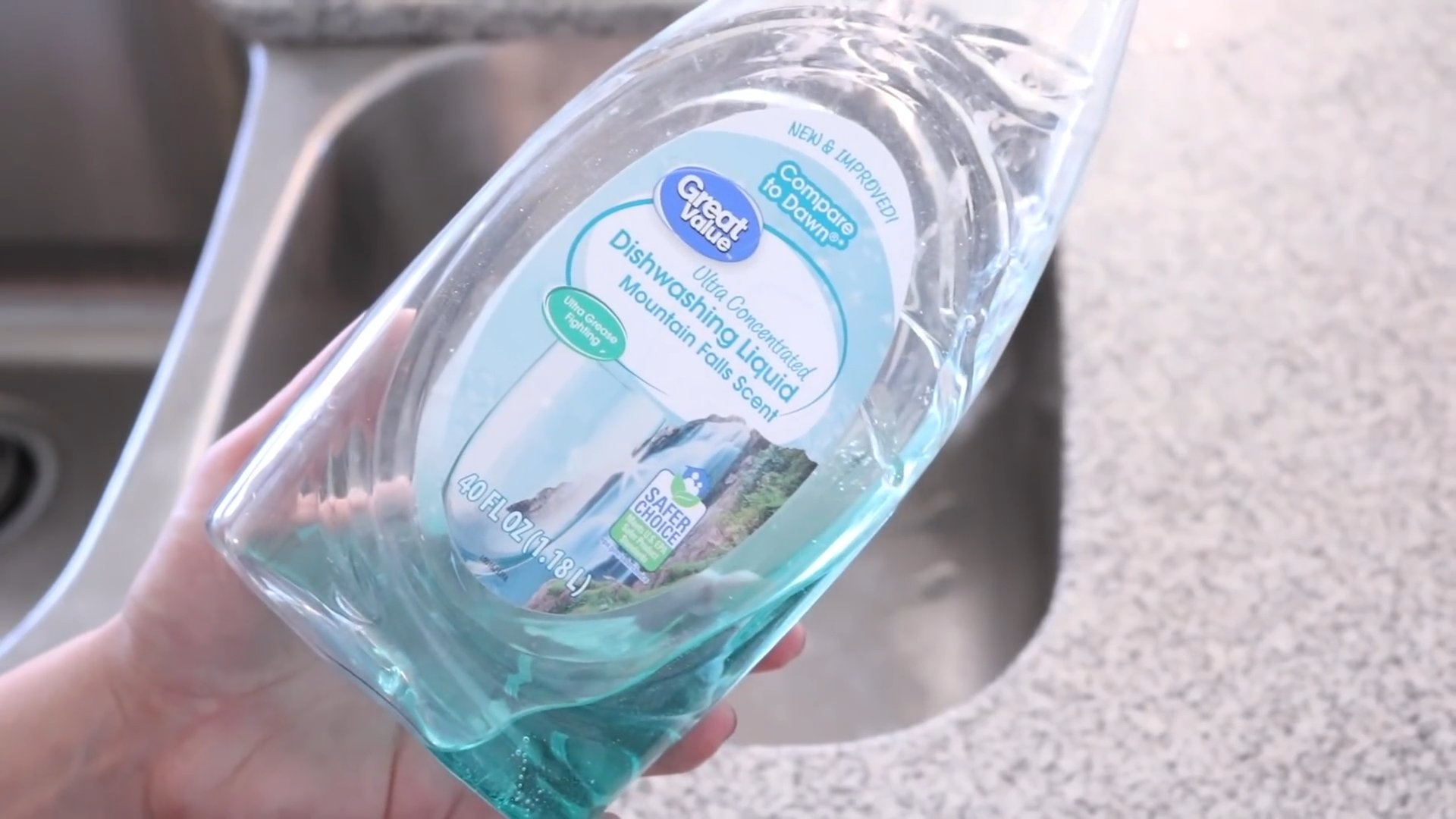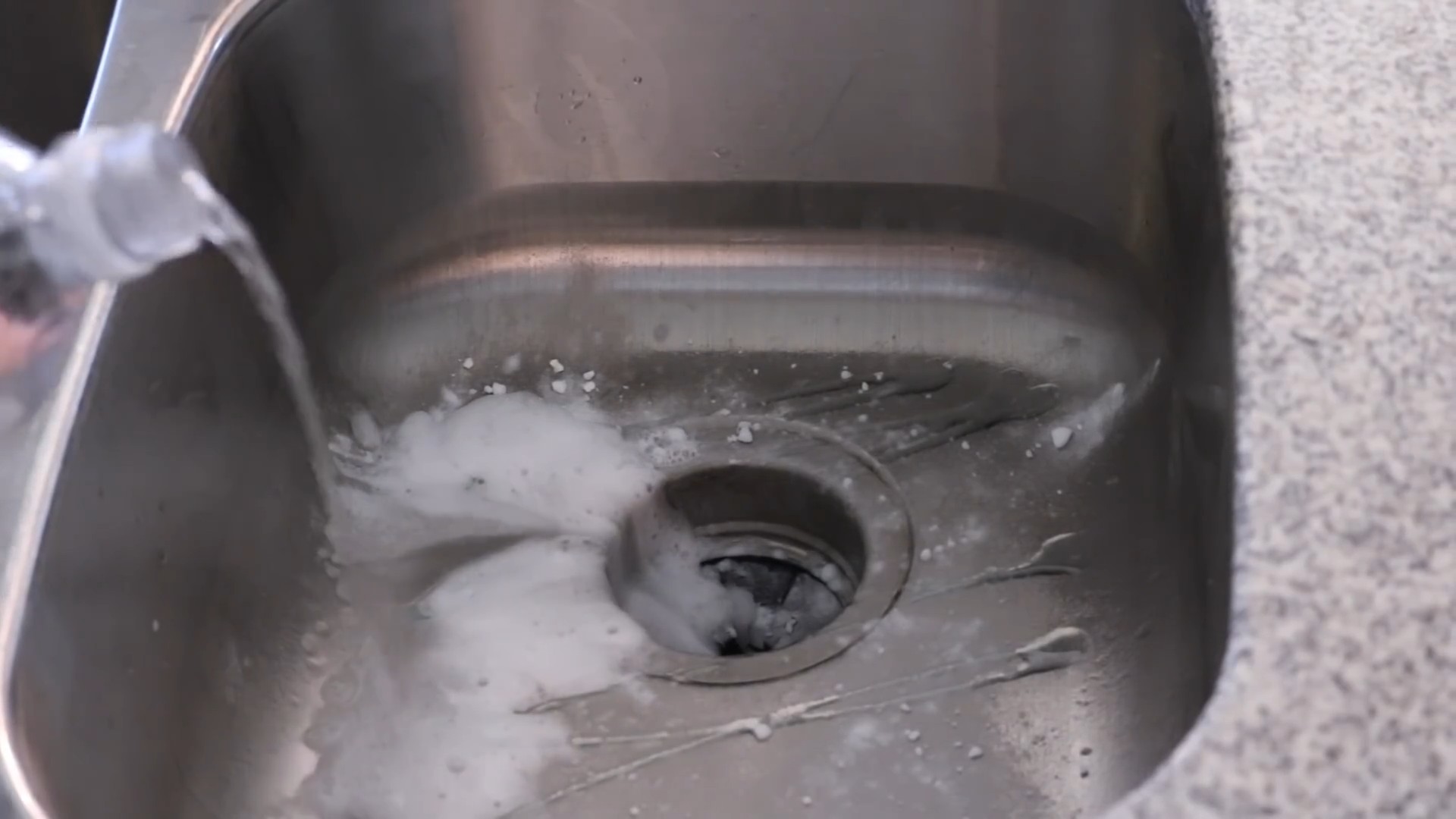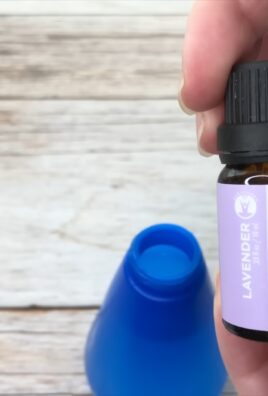Dish soap sink cleaning hack: Are you tired of staring at a grimy, stained sink every day? I know I was! It felt like no matter how much I scrubbed, that stubborn film just wouldn’t budge. But what if I told you the secret to a sparkling clean sink was already sitting right under it? This simple DIY trick, using something you probably use daily, will transform your sink from drab to dazzling in minutes!
Throughout history, keeping our homes clean has been a sign of prosperity and well-being. While our ancestors might not have had fancy dish soap, they certainly understood the importance of a clean kitchen space. Think about it – a clean sink isn’t just aesthetically pleasing; it’s also crucial for hygiene, preventing the spread of germs and keeping your family healthy.
Let’s face it, we all lead busy lives. Who has time to spend hours scrubbing a sink? That’s why this dish soap sink cleaning hack is a game-changer. It’s quick, easy, and uses readily available materials. You’ll save time, money on expensive cleaning products, and the satisfaction of seeing your sink shine is truly rewarding. So, ditch the harsh chemicals and get ready to discover the magic of dish soap! I’m excited to share this simple yet effective method with you.

DIY Dish Soap Sink Cleaning Hack: Sparkling Clean in Minutes!
Hey everyone! I’m so excited to share this super simple, yet incredibly effective, sink cleaning hack with you. I’ve tried countless cleaning products over the years, and honestly, nothing beats this easy DIY solution for a sparkling clean and fresh-smelling sink. It’s quick, cheap, and uses ingredients you probably already have in your kitchen! Get ready to say goodbye to stubborn stains, grime, and unpleasant odors.
What You’ll Need:
* Dish Soap: The star of the show! Any brand will do, but I prefer using a grease-cutting formula for extra cleaning power.
* Baking Soda: This acts as a gentle abrasive to scrub away grime without scratching your sink.
* White Vinegar: The acid in vinegar helps to dissolve mineral deposits and cut through soap scum. Plus, it’s a natural disinfectant!
* Hot Water: Essential for rinsing and activating the cleaning power of the other ingredients.
* Soft Sponge or Cloth: Avoid using anything too abrasive that could scratch your sink’s surface.
* Old Toothbrush: Perfect for getting into those hard-to-reach areas around the drain and faucet.
* Optional: Lemon or Lime: For an extra boost of freshness and cleaning power.
* Optional: Essential Oil (like tea tree or lemon): A few drops can add a pleasant scent and antibacterial properties.
* Rubber Gloves: To protect your hands from the cleaning solution.
Step-by-Step Instructions:
Okay, let’s get started! Follow these simple steps, and you’ll have a sparkling clean sink in no time.
1. Rinse the Sink: Begin by rinsing your sink thoroughly with hot water. This will help to loosen any loose debris and prepare the surface for cleaning. Make sure to remove any dishes or items from the sink area.
2. Sprinkle Baking Soda: Generously sprinkle baking soda all over the surface of your sink. Don’t be shy! Cover every nook and cranny, including the drain area and around the faucet. The baking soda will act as a gentle abrasive to help scrub away grime and stains.
3. Add Dish Soap: Squirt a generous amount of dish soap onto the baking soda. I usually use about a tablespoon or two, depending on the size of my sink. The dish soap will help to break down grease and dirt, while also adding some extra cleaning power.
4. Create a Paste: Using your sponge or cloth, gently mix the baking soda and dish soap together to form a paste. You might need to add a little bit of water to help create the right consistency. The paste should be thick enough to cling to the surface of the sink.
5. Scrub the Sink: Now comes the fun part! Use your sponge or cloth to scrub the entire surface of the sink with the baking soda and dish soap paste. Pay special attention to areas with stubborn stains or grime. For hard-to-reach areas around the drain and faucet, use your old toothbrush to scrub thoroughly. I like to really put some elbow grease into it!
6. Rinse with Hot Water: Once you’ve scrubbed the entire sink, rinse it thoroughly with hot water. Make sure to remove all traces of the baking soda and dish soap paste. You might need to rinse it a few times to get everything completely clean.
7. Vinegar Power! Now for the magic touch! Pour white vinegar down the drain. You’ll likely see some fizzing and bubbling – that’s the vinegar reacting with any remaining baking soda. This reaction helps to break down any lingering grime and deodorize the drain. Let the vinegar sit for about 5-10 minutes.
8. Final Rinse: After the vinegar has had time to work its magic, rinse the sink thoroughly with hot water one last time. This will remove any remaining vinegar and leave your sink sparkling clean.
9. Dry the Sink: Use a clean, dry cloth to dry the sink thoroughly. This will help to prevent water spots and keep your sink looking its best.
Optional Enhancements:
Want to take your sink cleaning to the next level? Here are a few optional enhancements you can try:
* Lemon or Lime: After rinsing the sink, cut a lemon or lime in half and rub it all over the surface. The citric acid in the lemon or lime will help to brighten the sink and leave it smelling fresh. Rinse with water after a few minutes.
* Essential Oils: Add a few drops of your favorite essential oil (like tea tree or lemon) to the baking soda and dish soap paste. This will add a pleasant scent and provide some extra antibacterial properties.
* Boiling Water: For a really deep clean, pour a pot of boiling water down the drain after rinsing with vinegar. This will help to flush out any remaining debris and keep your drain clear. Be careful when handling boiling water!
Dealing with Stubborn Stains:
Sometimes, you might encounter stubborn stains that are difficult to remove with the basic cleaning method. Here are a few tips for dealing with those pesky stains:
* Baking Soda Paste: Make a thick paste of baking soda and water and apply it directly to the stain. Let it sit for 15-20 minutes before scrubbing and rinsing.
* Hydrogen Peroxide: For tough stains, try applying hydrogen peroxide to the affected area. Let it sit for a few minutes before scrubbing and rinsing. Always test hydrogen peroxide in an inconspicuous area first to make sure it doesn’t discolor your sink.
* Commercial Cleaner: If all else fails, you can try using a commercial sink cleaner specifically designed for your sink material. Always follow the manufacturer’s instructions carefully.
Maintaining a Clean Sink:
The best way to keep your sink clean is to maintain it regularly. Here are a few tips for keeping your sink sparkling between deep cleans:
* Rinse After Use: Rinse your sink with water after each use to prevent food particles and grime from building up.
* Wipe Down Regularly: Wipe down your sink with a damp cloth or sponge every day to remove any spills or splatters.
* Avoid Harsh Chemicals: Avoid using harsh chemicals or abrasive cleaners that could damage your sink’s surface.
* Protect Your Sink: Use a sink protector or mat to prevent scratches and dents.
Different Sink Materials:
It’s important to consider the material of your sink when cleaning it. Here’s a quick guide to cleaning different types of sinks:
* Stainless Steel: Stainless steel sinks are generally durable and easy to clean. However, they can be prone to water spots and scratches. Use a non-abrasive cleaner and dry the sink thoroughly after each use.
* Porcelain: Porcelain sinks are beautiful but can be prone to chipping and staining. Use a gentle cleaner and avoid using abrasive scrubbers.
* Composite: Composite sinks are made from a blend of materials and are generally durable and stain-resistant. Use a mild cleaner and avoid using harsh chemicals.
* Copper: Copper sinks are naturally antibacterial but can develop a patina over time. Use a cleaner specifically designed for copper sinks.
Safety First!
While this cleaning hack is generally safe, it’s always a good idea to take a few precautions:
* Wear Rubber Gloves: Protect your hands from the cleaning solution by wearing rubber gloves.
* Avoid Mixing Chemicals: Never mix vinegar with bleach, as this can create toxic fumes.
* Ventilate the Area: Make sure to ventilate the area while cleaning to avoid inhaling any fumes.
* Test in an Inconspicuous Area: Before using any new cleaning product, test it in an inconspicuous area to make sure it doesn’t damage your sink.
I hope you found this DIY dish soap sink cleaning hack helpful! It’s a simple and effective way to keep your sink sparkling clean and fresh-smelling. Give it a try and let me know what you think! Happy cleaning!

Conclusion
So, there you have it! This simple, yet incredibly effective, dish soap sink cleaning hack is more than just a quick fix; it’s a game-changer for maintaining a sparkling clean and fresh-smelling kitchen. We’ve walked you through the easy steps, highlighting how readily available dish soap can transform your sink from a breeding ground for grime to a gleaming centerpiece.
Why is this a must-try? Because it’s efficient, economical, and environmentally conscious. You’re likely already using dish soap daily, so you’re not adding another harsh chemical to your cleaning arsenal. Plus, the combination of degreasing power and gentle abrasion (if you opt for the baking soda boost) tackles everything from stubborn food residue to unsightly water spots. Forget expensive specialty cleaners; this DIY method delivers professional-level results without breaking the bank.
But don’t stop there! Feel free to experiment and personalize this cleaning routine to suit your specific needs and preferences. For instance, if you’re dealing with particularly tough stains or mineral buildup, consider adding a splash of white vinegar to the mix. The acidity of the vinegar will help to dissolve stubborn deposits, leaving your sink even brighter. Just be sure to test it in an inconspicuous area first, especially if you have a delicate sink material like natural stone.
Another variation involves incorporating essential oils for an added boost of fragrance and antibacterial properties. A few drops of lemon, tea tree, or eucalyptus oil can transform your sink cleaning routine into an aromatherapy experience, leaving your kitchen smelling fresh and invigorating. Again, exercise caution and research the compatibility of essential oils with your sink material before applying them directly.
For stainless steel sinks, a final polish with a microfiber cloth can work wonders in removing any lingering water spots and enhancing the shine. And if you have a porcelain sink, be extra gentle with your scrubbing to avoid scratching the surface. A soft sponge or cloth is usually sufficient to remove dirt and grime without causing damage.
Ultimately, the beauty of this dish soap sink cleaning hack lies in its simplicity and adaptability. It’s a versatile solution that can be tailored to fit your unique cleaning needs and preferences. So, ditch the harsh chemicals and embrace the power of dish soap for a cleaner, fresher, and more sustainable kitchen.
We wholeheartedly encourage you to give this DIY trick a try. We are confident that you’ll be amazed by the results. And once you’ve experienced the magic of a sparkling clean sink, we’d love to hear about it! Share your experiences, tips, and variations in the comments below. Let’s create a community of clean-sink enthusiasts and inspire others to embrace the power of simple, effective cleaning solutions. Your feedback is invaluable and will help us refine and improve this guide for future readers. So, go ahead, grab your dish soap, and get ready to transform your sink!
FAQ
Q: How often should I use this dish soap sink cleaning hack?
A: The frequency depends on how often you use your sink and how quickly it gets dirty. For most households, cleaning your sink with dish soap 2-3 times a week is sufficient to maintain a clean and fresh surface. If you cook frequently or notice buildup more often, you may want to clean it daily. A quick rinse and wipe-down with dish soap after each use can also help prevent grime from accumulating.
Q: Can I use any type of dish soap for this cleaning hack?
A: Generally, yes. Most dish soaps will work effectively for cleaning your sink. However, consider using a dish soap that is specifically formulated for grease-cutting if you frequently deal with oily or greasy messes in your sink. Also, if you have sensitive skin, opt for a hypoallergenic or fragrance-free dish soap to avoid irritation.
Q: Will this dish soap sink cleaning hack work on all types of sinks?
A: This cleaning hack is generally safe and effective for most common sink materials, including stainless steel, porcelain, and composite sinks. However, it’s always a good idea to test the cleaning solution in an inconspicuous area first, especially if you have a more delicate or unusual sink material like natural stone (granite, marble, etc.). Avoid using abrasive scrubbers or harsh chemicals on delicate surfaces, as they can cause scratches or damage.
Q: What if I have hard water stains in my sink? Will this cleaning hack remove them?
A: While dish soap can help to loosen and remove some hard water stains, it may not be sufficient for tackling stubborn buildup. For hard water stains, consider adding white vinegar to the cleaning solution. The acidity of the vinegar will help to dissolve the mineral deposits. You can also create a paste of baking soda and water and apply it to the stains, allowing it to sit for a few minutes before scrubbing gently. For severe hard water stains, you may need to use a commercial hard water stain remover.
Q: Can I use bleach to clean my sink?
A: While bleach is a powerful disinfectant, it’s generally not recommended for routine sink cleaning. Bleach can be corrosive and may damage certain sink materials, such as stainless steel or natural stone. It can also release harmful fumes when mixed with other cleaning products, such as ammonia. If you choose to use bleach, dilute it properly with water and ensure adequate ventilation. Never mix bleach with other cleaning products.
Q: My sink has a garbage disposal. Can I still use this cleaning hack?
A: Yes, you can still use this cleaning hack if you have a garbage disposal. In fact, it can help to keep your garbage disposal clean and fresh-smelling. After cleaning the sink, run some water down the drain and turn on the garbage disposal for a few seconds to flush out any remaining debris. You can also add a few ice cubes and lemon or lime wedges to the garbage disposal to help freshen it up.
Q: How do I prevent my sink from getting dirty in the first place?
A: Prevention is key to keeping your sink clean and fresh. Here are a few tips:
* Rinse your sink after each use to remove food particles and debris.
* Wipe down your sink with a damp cloth or sponge to prevent water spots and grime from accumulating.
* Avoid pouring grease or oil down the drain, as it can clog your pipes.
* Use a sink strainer to catch food particles and prevent them from entering the drain.
* Regularly clean your sink with dish soap and water to maintain a clean and fresh surface.
Q: What are some other natural cleaning alternatives I can use in my sink?
A: Besides dish soap, there are several other natural cleaning alternatives you can use in your sink:
* Baking soda: A mild abrasive that can help to remove stains and grime.
* White vinegar: A natural disinfectant and deodorizer that can help to dissolve hard water stains.
* Lemon juice: A natural cleaner and deodorizer that can help to remove stains and leave your sink smelling fresh.
* Essential oils: Can add fragrance and antibacterial properties to your cleaning routine.
Q: I tried the dish soap sink cleaning hack, but my sink still doesn’t look clean. What am I doing wrong?
A: If your sink still doesn’t look clean after trying the dish soap sink cleaning hack, consider the following:
* Make sure you’re using enough dish soap.
* Scrub thoroughly, paying attention to areas with stubborn stains or grime.
* Rinse your sink thoroughly with water to remove all traces of soap and debris.
* If you have hard water stains, try adding white vinegar or baking soda to the cleaning solution.
* If you have a particularly dirty sink, you may need to repeat the cleaning process.
* Consider using a different type of scrubber or cleaning tool.
* If all else fails, you may need to use a commercial sink cleaner.
Q: Can I use this dish soap sink cleaning hack on other surfaces in my kitchen?
A: While this hack is primarily designed for sinks, the basic principle of using dish soap and water can be applied to other surfaces in your kitchen, such as countertops, stovetops, and backsplashes. However, always test the cleaning solution in an inconspicuous area first to ensure that it doesn’t damage the surface. Avoid using abrasive scrubbers or harsh chemicals on delicate surfaces.




Leave a Comment